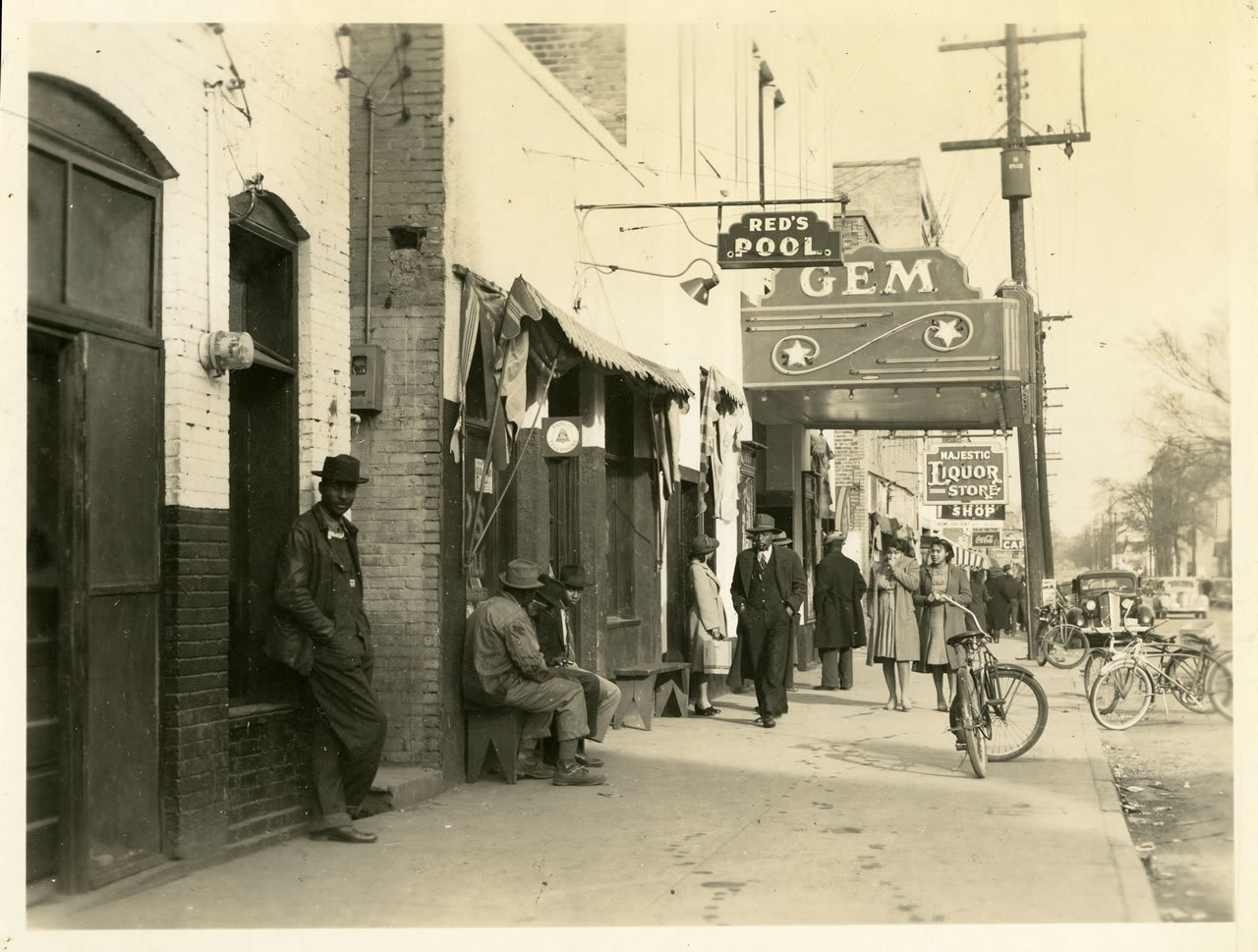The history of Little Rock’s West 9th Street
During and after Reconstruction, newly freed southern blacks gathered from around Arkansas to Little Rock. At the time, the capital city was considered a progressive southern town. Because the city’s white residents were less financially reliant on the former slave industry than their rural counterparts, they were more tolerant of the black men and women now owed a salary for their labor.
A place called Blissville
At the turn of the century, the area around present-day West 9th Street was known as “Blissville.” The small community, established initially with shacks and shanties, quickly grew into a brick-and-mortar business district. Although this area was primarily known for black residence and businesses, Little Rock was considered a “salt and pepper city.” In the late 19th century through the early 20th century, Jim Crow laws were established but not as pervasive as they would become in the upcoming decades. At that time, demographics were more geographically interwoven than they are even today.
A Walk Down The Line
As the 20th century progressed, segregation laws become more and more restrictive and West 9th Street officially became the African American business district for Little Rock, AR. The street would eventually adopt the nickname “The Line,” as it marked the primary border between the black and white parts of the city. Businesses along The Line varied greatly but were primarily made up of service and entertainment industry professionals. Even though black Americans were technically free to pursue any career, whites still held most of the wealth in the United States and as such mandated the types of occupations African Americans could successfully operate. This would establish the types of businesses blacks owned for years to come.
Pharmacies Florish
Many of the most successful individuals on West 9th Street owned barber shops and beauty salons, restaurants, cleaning services, juke joints, and clubs. Many Black Americans were often restricted to these industries. But not all, of course. Plenty of professionals occupied office space on West 9th Street as well; doctors, dentist, lawyers, and the like. These professions provided expensive services that required a great deal of knowledge to execute properly. Since the black community did not have the income or support systems in place, these professionals would regularly bankroll their practices or firms personally, until they could not. Unfortunately, these professions were often short lived. Surprisingly, pharmacists seemed immune to this trend. Almost every block of West 9th Street had its own pharmacy.
The Fraternity of Community
The African American community of West 9th Street thrived in large part due to the fraternity groups that acted as mutual aid organizations. These groups supported medical care, life rights, community organization, and kept black communities all over the country from buckling under the systemic issues that held them at a disadvantage. The Taborian Hall was built by one such organization.
Next week, I will talk about the Knights and Daughters of Tabor and the history of Taborian Hall (the historic building that houses the Dreamland Ballroom). If you would like to walk through this history with your own two feet Mosaic Templars Cultural Center will be hosting their historic walking tour of W. 9th St. this Saturday, Sept. 10th that will end at the Dreamland Ballroom. Tour starts at 9:30 AM at Mosaic Templars and ends at 11:30 AM. See you then!






